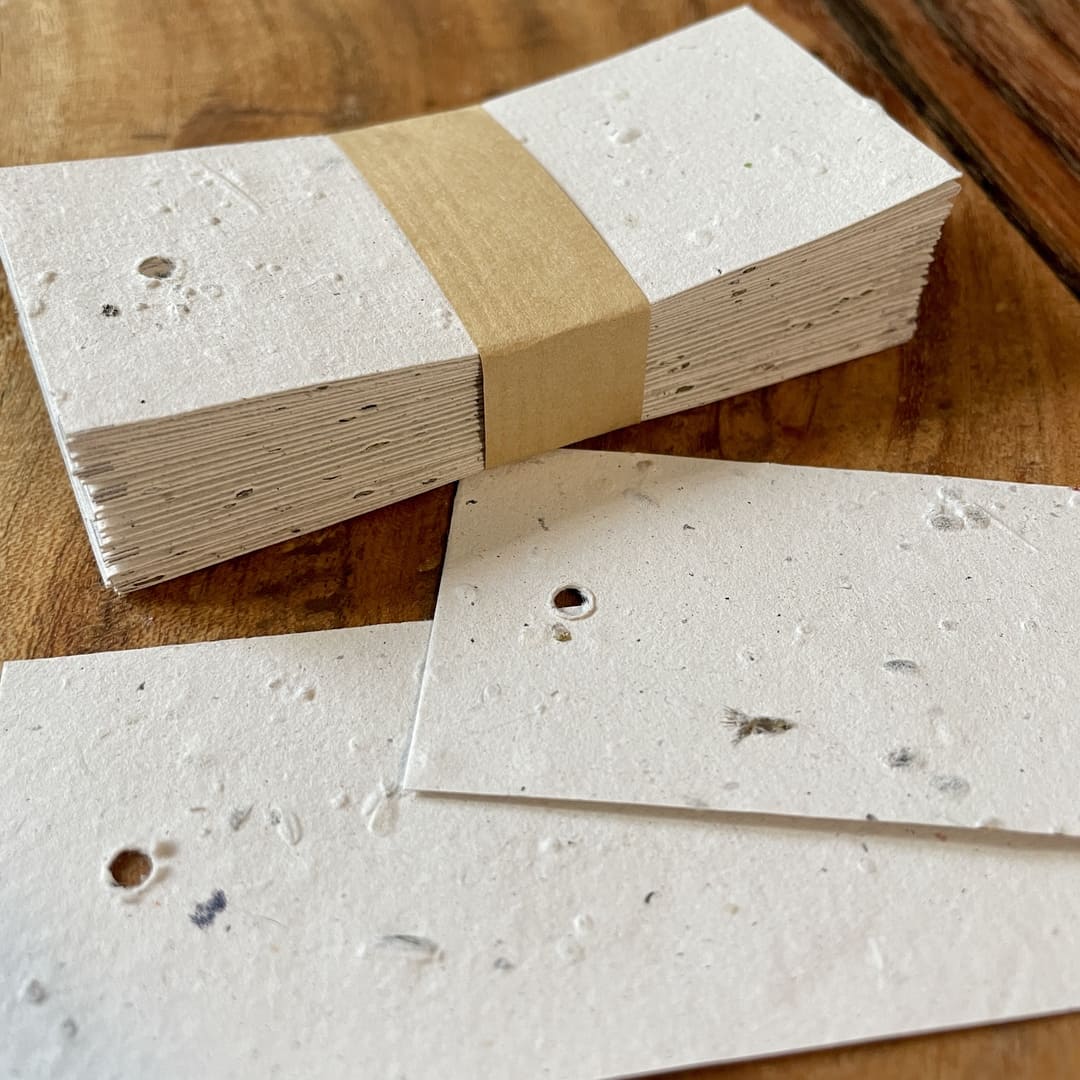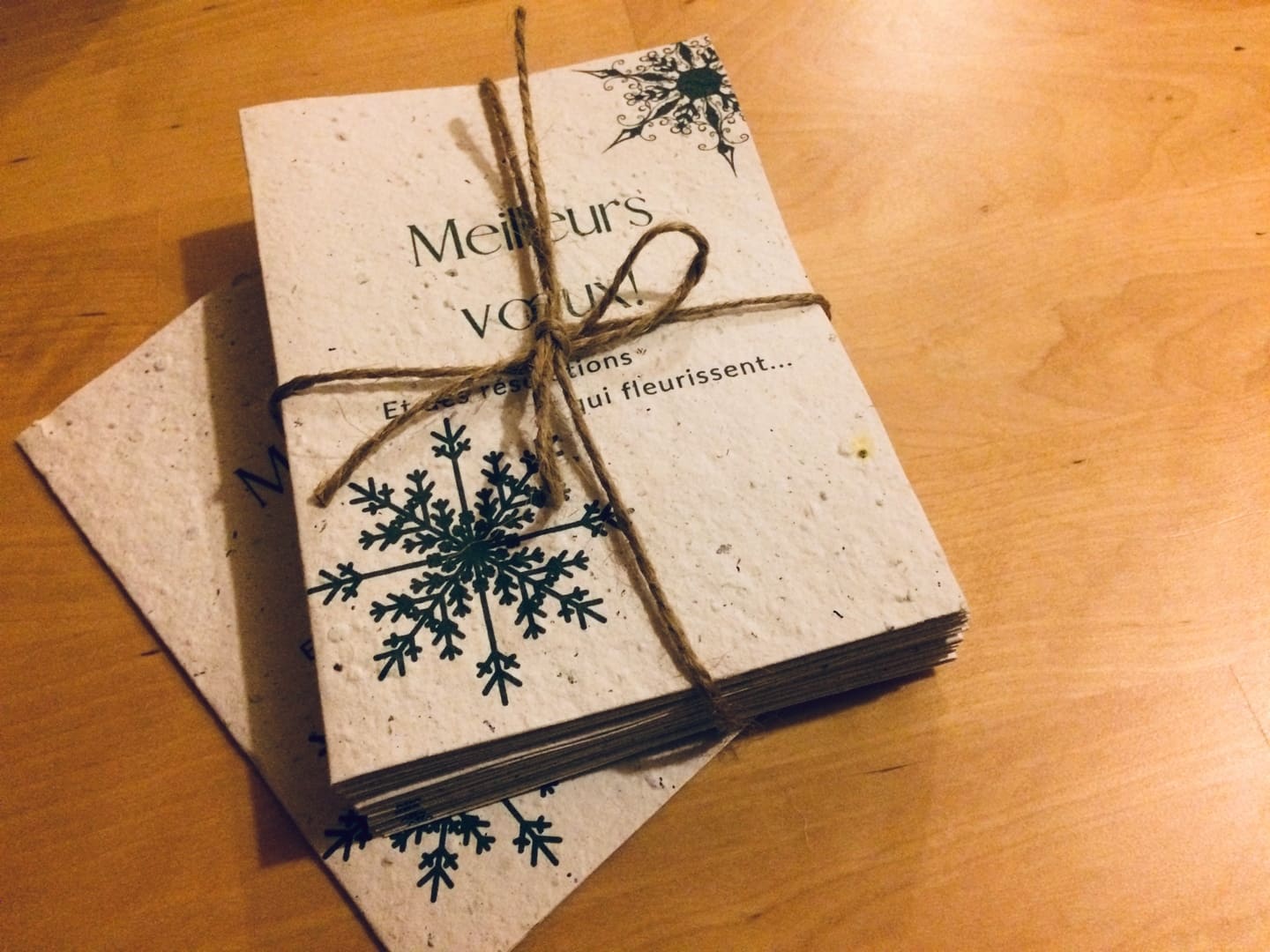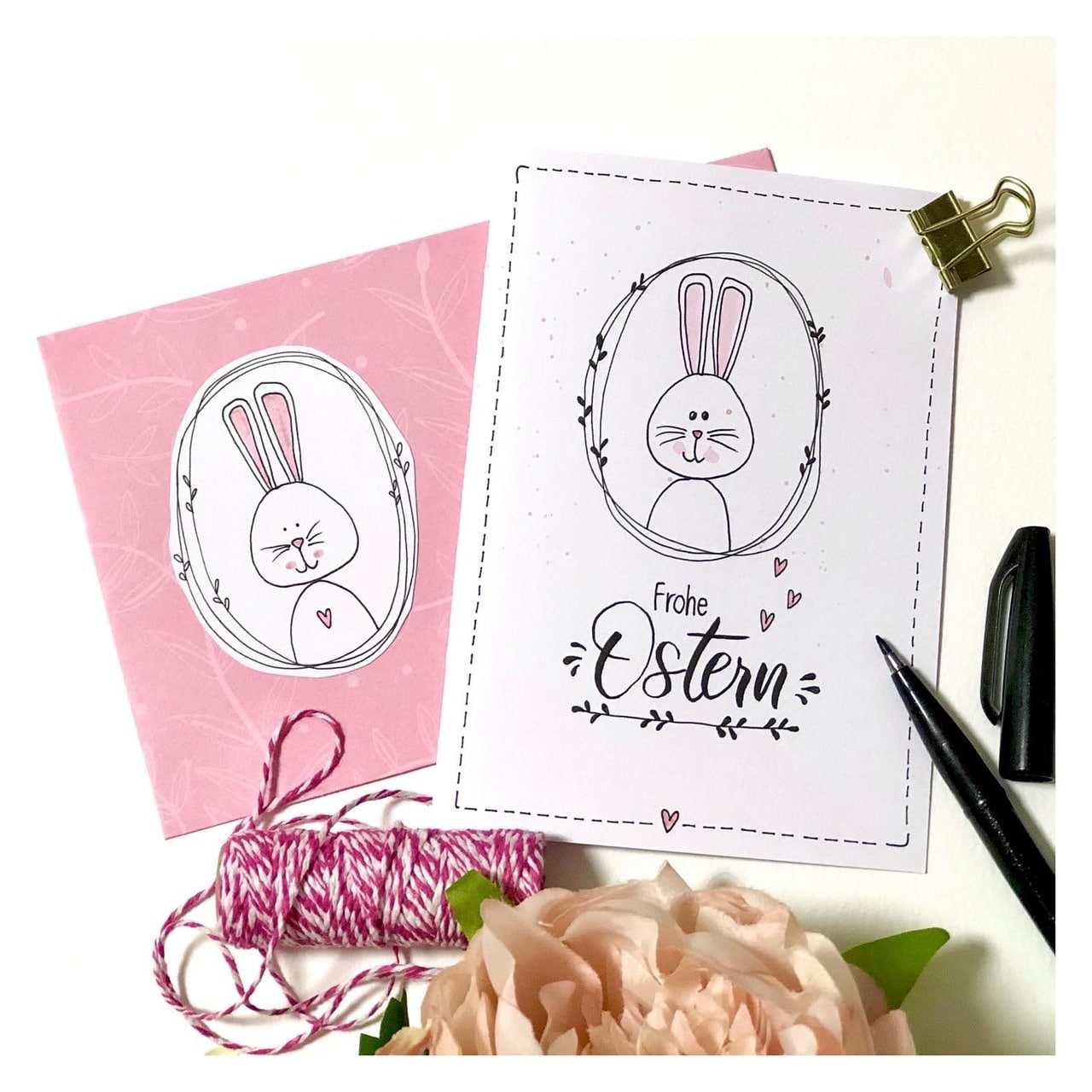Designing greeting cards from seeded paper is as green as it is fun. Imagine your friends' faces when they receive a greetings card they can plant! In this article, we'll explore ideas and tips for turning your New Year's wishes into a bouquet of flowers. Fasten your seatbelts, because we're about to delve into the world of seeded paper greetings cards, where creativity meets sustainability.
Choosing the right seeded paper

Why seeded paper?
Seeded paper is an innovative and sustainable choice for greetings cards. As well as being environmentally friendly, it has a magical touch: after sharing your message, the card can be planted to give life to plants. This concept adds an ecological and sentimental dimension to your greetings cards, transforming a simple piece of paper into a mini garden. It also brings added pleasure to your recipients, who will have the surprise and joy of seeing something beautiful and alive grow thanks to your card.
What type of seed should I choose?
The choice of seeds is crucial and must be adapted to the recipient's preferences and growing conditions. Wildflowers, for example, are a popular option as they are generally hardy and low-maintenance. Aromatic herbs, such as basil, mint and thyme, are perfect for cooking enthusiasts. If you really want to impress, you can opt for vegetables such as cherry tomatoes or radishes, which grow quickly and can be grown indoors. You should also consider flowers that are specific to each season, such as tulips in spring or chrysanthemums in autumn, to maximise the chances of successful germination.
Paper texture
The texture of the seeded paper is a key factor in the design of your greetings cards. Paper that is too rough can make writing difficult and unpleasant, while paper that is too smooth may not absorb ink well, making your message illegible. Striking a balance is therefore essential. For a pleasant feel and good ink absorption, opt for a medium-weight, lightly textured paper. You can also experiment with different types of seeded paper to see which best suits your specific needs. Don't forget to test your pens and inks on samples before finalising your cards to avoid unpleasant surprises.
Card design and personalisation

Graphic elements
The graphic design of your seeded paper greetings card should captivate the eye while remaining informative. Use natural, soothing colours like greens, blues and browns to evoke nature and serenity. Incorporate botanical illustrations, such as drawings of flowers, leaves or small gardens, to evoke the potential for growth contained in the paper. You can also include simple infographics explaining how to plant the card. This will add an educational and practical dimension to your card while ensuring that the recipient knows exactly what to do to see their plants grow.
The message
The message you write on your greetings card is just as important as the design. It's an opportunity to be creative and humorous. For example, you can use nature-related puns: "I wish you a year of blossoming happiness" or "Plant this card and reap the smiles". You can also include inspirational quotes about nature and growth, or personal anecdotes that show how much you care about the person. A sincere, personalised message will always touch the hearts of your recipients.
Customisation
Personalisation is the key to making each card unique and special. Use stamps, stickers or even hand-drawn designs to add a personal touch. If you have a talent for calligraphy, write each recipient's name by hand for a more intimate effect. You can also include a small note or personal anecdote for each person. This will show how much you care about them and make your card even more special. Remember, every detail counts and even small touches of personalisation can have a big impact.
Ecological embellishments
To add a touch of elegance while remaining environmentally friendly, consider using sustainable embellishments. Jute ribbons, kraft paper labels or pressed flowers are beautiful options that complement a seeded paper card perfectly. Make sure all the materials you use are biodegradable or recyclable to maintain the ecological integrity of your card. You can also experiment with vegetable-based inks for printing or decorating your cards. These little touches demonstrate your commitment to the environment and add an extra layer of meaning to your gesture.
Practical tips for manufacturing

Choosing the right tools
To create quality seeded paper greetings cards, it's crucial to use the right tools. A good cutter and a metal ruler will guarantee precise cuts. Opt for eco-friendly ink pads to decorate your cards and vegetable-ink pens to write your messages. If you plan to produce large quantities, an eco-friendly printer is a wise investment. It will allow you to print your designs directly onto the seeded paper without damaging the seeds. What's more, having a clean, well-lit work surface will make the production process much easier.
Manufacturing techniques
Different manufacturing techniques can be used depending on the design and complexity of your card. For a simple card, traditional folding is sufficient. However, for more elaborate designs, such as pop-up cards or cards with multiple flaps, extra care needs to be taken. Make sure the seeds remain intact and are not crushed. Use light pressure when folding and cutting. If you need to glue elements together, use eco-friendly, non-toxic glues. These techniques will ensure that your card remains beautiful and that the seeds remain viable.
Preserving the viability of seeds
Maintaining the viability of the seeds is essential to ensure that your seeded paper greetings card works as intended. Avoid exposing the paper to extreme temperatures or excessive humidity, as this could compromise the seeds' ability to germinate. Store your cards in a cool, dry place until they are ready to be sent. Also inform your recipients of the best storage conditions to maximise the chances of successful germination. You can include a short leaflet with planting and storage tips to make things easier for them.
Shipping and delivery
Sending greetings cards made from seeded paper requires special care to ensure that the cards arrive in good condition. Use sturdy, well-padded envelopes to protect your cards during transport. Clearly indicate on the envelope that it contains seeds, to avoid it being subjected to potentially damaging postal treatments such as X-rays. Also include a small note explaining the concept of the seeded card and giving simple instructions for planting it. These precautions will ensure that your cards arrive intact and that your recipients know how to use them correctly.
Recycling and sustainability
Finally, make sure that the entire manufacturing process for your seeded paper greetings cards is in line with your ecological values. Use recycled materials and recycle paper scraps. Encourage your recipients to recycle or compost any extra packaging. If possible, choose suppliers who share your ecological values and use sustainable practices. By following these principles, you will be contributing to a sustainable life cycle for your seeded paper greetings cards, demonstrating that you can be creative and environmentally friendly at the same time.
Designing greetings cards from seeded paper is a creative and rewarding activity. Not only are you pleasing your loved ones, but you're also contributing to a greener environment. Whether you choose flower, herb or vegetable seeds, each card is a promise of nature and beauty. By following our tips, you can create unique, long-lasting greetings cards that will delight everyone. So get out your tools, let your imagination run wild and get ready to see your wishes blossom!

